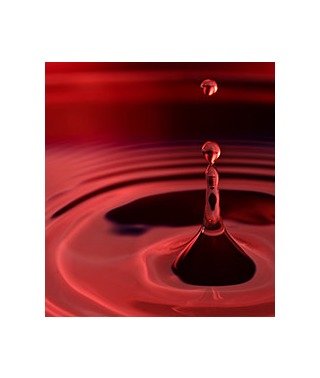Astaxanthin is a red pigment found in a wide variety of natural organisms. It is similar to chlorophyll, which is found in green plants and vegetables, and beta-carotene, which is found in orange plants and vegetables. Plants and animals that exhibit intense red coloring tend to be very high in astaxanthin, which is itself the world's most powerful carotenoids.
Where Is Astaxanthin Found in Nature?
Unlike chlorophyll and beta-carotene, which are both found in terrestrial plants, astaxanthin is found predominantly in marine life. A form of microalgae, astaxanthin is consumed by many different types of aquatic life, and its intense red pigmentation results in these animals having red or pink flesh, or outer shells.
Because of this, one of the highest concentrations of astaxanthin, other than H. pluvialis (the truest form of the microalgae and what fish eat), is found in Wild Pacific sockeye salmon. This pigment is what gives the fish's flesh its signature deep red hue, and incredible health-benefitting antioxidant properties. Other natural sources of astaxanthin include lobster, arctic shrimp, crab, crawfish, red trout, algae, and krill. Red-colored birds often get their coloring by eating fish and plants that are high in astaxanthin, but they do not typically have a high concentration of the pigment in their bodies.
It is interesting to note that in some cases, commercial fisheries add sythetically-produced astaxanthin to their fish feed, in order to help give their fish the same appearance as fish caught in the wild. This synthetic astaxanthin is produced from petrochemicals - the same things you put into the crankcase of your car. It is completely different chemically than natural astaxanthin and has been shown to be 20X to 50X weaker as an antioxidant than its natural cousin.
Additional Sources of Astaxanthin
While marine life is where astaxanthin is most commonly found, it is not restricted to water-based plants and animals. For example, a species of yeast called Xanthophyllomyces dendrorhous (also known as Phaffia) also contains relatively high levels of astaxanthin. Like the microalgae form of the pigment, Xanthophyllomyces dendrorhous is a producer of astaxanthin; it does not absorb it from other organic sources.
Other Sources of Astaxanthin
Not all astaxanthin is naturally occurring. Synthetically produced astaxanthin is produced in laboratories where it is derived from petrochemicals. This form is vastly inferior to natural astaxanthin and is potentially unsafe. Also, astaxanthin from genetically mutated yeast known as Phaffia has not established sufficient safety standards and is thus not allowed by the US FDA for human consumption above 2mg per day and is not recommended for long-term use or for children. The only form of astaxanthin that has hundreds of medical research experiments showing health benefits as well as extensive safety trials and fifteen years of safe use in humans is astaxanthin from microalgae.
Astaxanthin Supplements
The sources of astaxanthin that are found in nature are not where the highest concentrations of this antioxidant come from, in terms of human consumption. While humans can enjoy the health benefits of astaxanthin by eating plenty of salmon, algae, and shellfish, the greatest concentration for humans comes in the form of all-natural astaxanthin supplements. Check out our best astaxanthin supplements and find one that matches your daily needs.
Disclaimer:
The information provided is for educational purposes only and does not constitute medical advice. Always seek the advice of your physician or qualified healthcare provider with any questions or concerns about your health. Check with your doctor before beginning any exercise program. Never disregard or delay seeking medical advice because of something you have heard or read in this article or the internet.

